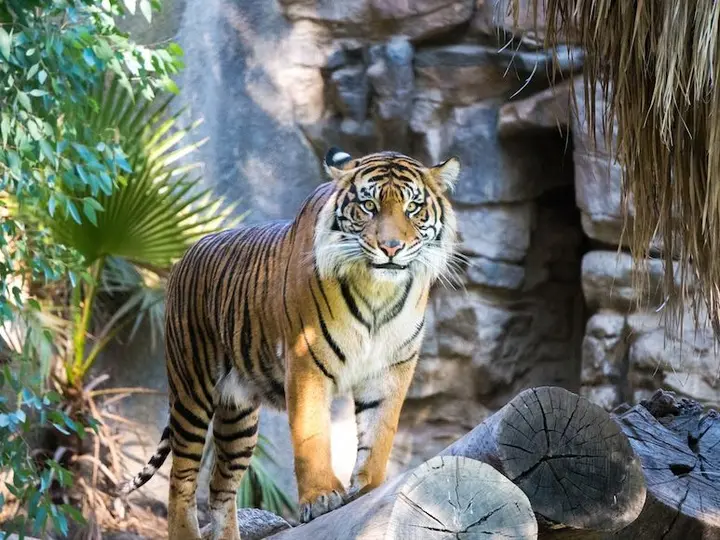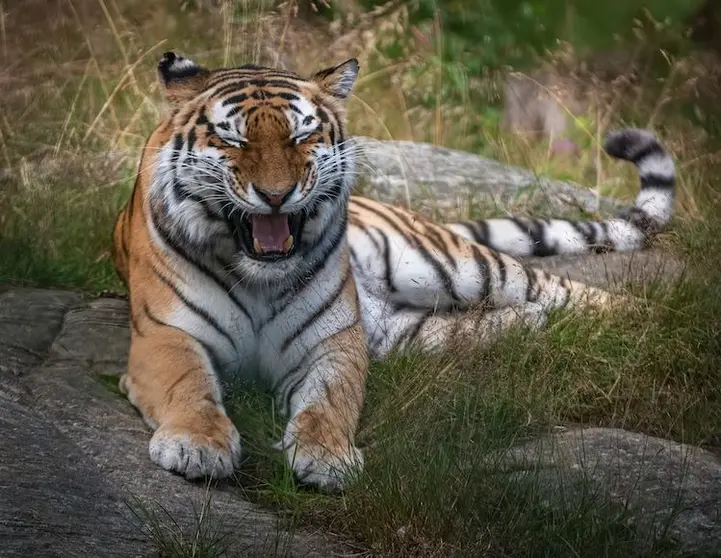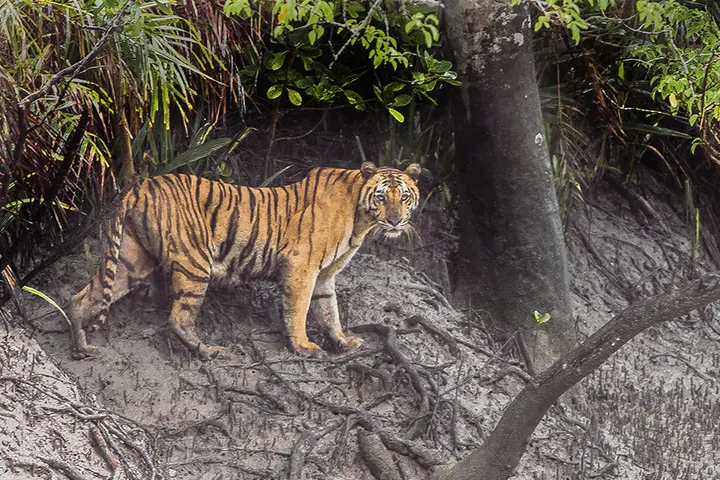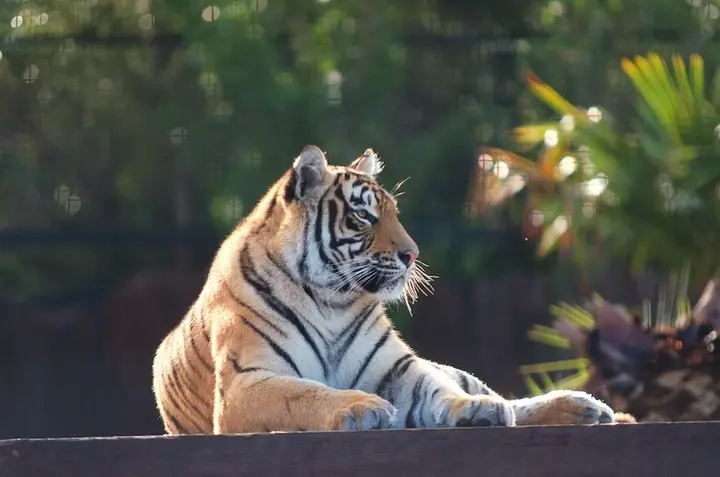Tigers in trouble: climate change and its impact on tiger habitats

Tigers have been associated with power and power in the animal world since ancient times, but today tigers are in a critical position that threatens their existence. This is due to climate change that greatly affects the habitats of these wonderful animals. This article will reveal the impact of climate change on tigers and its negative consequences on their natural habitats.
Show key points
- Tigers play a crucial role in maintaining ecological balance and biodiversity by regulating prey populations and supporting healthier ecosystems.
- Climate change is severely threatening tiger habitats through rising temperatures, reduced water resources, and altered rainfall patterns.
- Environmental degradation and habitat loss, exacerbated by human activities, are causing population fragmentation and increasing the risk of extinction for tigers.
- ADVERTISEMENT
- Protected reserves and conservation areas are essential safe havens that help protect tigers from poaching and habitat encroachment.
- Public awareness and education are vital tools in mobilizing local communities and global citizens to support tiger conservation efforts.
- Human collaboration with environmental organizations can lead to the implementation of effective wildlife protection programs and long-term habitat preservation.
- Supporting scientific research and sustainable tourism offers practical and financial contributions to tiger conservation in the face of climate challenges.
Threatened Kings: The Vital Role of Tigers in the Ecosystem

Tigers are an integral part of the ecosystem and are of great importance in maintaining the balance of nature and preserving biodiversity. Its ecological significance is not limited to its beautiful and unique existence. These animals are a key link in the food chain, as many other organisms depend on their existence to survive and evolve in the environment. Tigers are a key product of ecological balance, helping to regulate the populations of other animals and stabilize the biological system.
Recommend
Tigers also play an important role in preserving biodiversity in the areas where they live. They promote natural balance by chasing weak and sick animals, keeping genes strong and ensuring the survival of stronger and more resilient organisms.
In addition, tigers bring significant benefits to the environment through their role as a major predator. Tigers hunt down large and small animals, limiting the spread of animal disease and keeping individuals healthy in nature. Its role as a major predator also plays a role in controlling animal populations, preventing the outbreak of certain species and reducing ecological suffocation.

The problem of climate change is one of the biggest challenges facing humanity today, as it causes disruptions to the ecosystem and negative impacts on wildlife. The tiger is an endangered animal whose existence is greatly affected by climate change.
One of the main impacts of climate change on tiger habitats is rising temperatures. The tiger lives in tropical and tropical regions where temperatures are moderate. With climate change, temperatures are constantly rising, leading to a decrease in the amount of water available and an increase in drought in these areas. The tiger relies on water to drink and to meet its vital needs, and due to the lack of water, survival becomes difficult for it.
In addition, changes in the pattern and distribution of rain affect tigers. Tigers rely on forests and swamps for hunting and finding shelter. With climate change, the rainfall pattern changes and wetlands and swamps move. This change in rainfall leads to a decrease in the amount of water in these areas, so the tiger's source of food is interrupted and its natural sanctuary is affected.
Climate change also causes environmental pollution and the degradation of biological systems. The tiger relies on the biodiversity of its habitat for food and resources needed for survival and reproduction. With environmental pollution and degradation of biological systems, this reduces the availability and diversity of food resources, negatively affecting tiger survival in these areas.
Diminishing lands: human impact on native tiger habitats

With increasing climate change and human intervention in the environment, tigers face a serious risk of losing their natural habitats. Extensive natural habitats are a very important environment for tigers and play a vital role in maintaining ecosystem balance and preserving biodiversity. However, tigers face increasing destruction of their habitats due to several factors including climate change, land-use shifts and unsustainable industry.
Due to the destruction of their natural habitats, tigers lose spaces to move, hunt, and provide food and provisions. This has significant impacts on tigers, including shortages of food and water, loss of suitable breeding and communication places, increased risk of poaching and other threats.
In addition, the loss of natural habitats reduces the extent of tiger populations and the fragmentation of their communities. As the available natural spaces shrink, tigers are separated from each other, negatively affecting their ability to reproduce and find partners for mating and gene trading. This puts tigers at risk of potential extinction in the future.
Survival strategies: protecting tigers amid growing environmental challenges

Tigers suffer a significant threat as a result of climate change and its negative impact on their natural habitats. As their lands become increasingly degraded and food resources are shortaged, we must develop effective strategies to protect these beautiful creatures and preserve their presence in the natural world.
1. Establishment of protected areas:
We must promote the creation of nature reserves and areas dedicated to the protection of tigers. These areas are specifically designed to provide a safe environment for tigers and maintain their natural presence without harmful human interventions.
2. Promote awareness:
Public awareness of the importance of tigers and the effects of climate change on their wild animals is an essential step in protecting them. Local communities and NGOs should promote awareness and exchange information about tiger protection and environmental sustainability.
3. Increase monitoring and surveillance efforts:
Monitoring and surveillance efforts for tigers and their habitats should be strengthened in order to better understand their behaviour and assess their environmental impacts. By gathering accurate information, we can identify threats and design effective protection strategies.
Alliance for Tigers: How humanity can promote the survival of these unique creatures

As tigers face new challenges due to climate change, humans play an important role in supporting the survival of these beautiful animals in a rapidly changing world. Humanity has the power and ability to make a real difference by taking action and taking concrete action.
1. Human cooperation with environmental organizations:
When humans collaborate with environmental organizations that specialize in wildlife protection, it can have a significant impact on tiger survival in the climate change world. These collaborations include providing protected spaces for tigers and implementing programs to monitor and protect these vital areas.
2. Conservation of the natural habitat of tigers:
Humans can contribute to supporting tiger survival by preserving their natural habitats. This can be achieved by avoiding environmental pollution and the spread of illegal trade in tiger parts, as well as promoting sustainable agriculture and minimizing the impact of human activities on tiger bioregions.
3. Contribute to scientific research:
Humans can play an active role in supporting tiger survival by contributing to scientific research. By supporting and funding studies and research on the potential impacts of climate change on tigers, the preventive and adaptive measures needed to protect these animals can be identified.
4. Promoting sustainable tourism:
Sustainable tourism, geared towards protecting tigers and their habitats from a human perspective, is a critical step in supporting tiger survival in a climate-changing world. By supporting and visiting nature reserves and provinces that host tigers, humans can contribute financial income that supports the conservation of these creatures and the resources they need.

As the world grapples with climate change, we must act quickly and take action to protect wildlife, including tigers. Conserving tiger habitats and providing them with sustainable support can contribute to maintaining ecosystem balance and biodiversity. We have to take effective steps to preserve these beautiful and essential creatures in the wildlife web. By working together and being able to adapt to global challenges, we can ensure tigers survive and coexist in an era of climate change.








